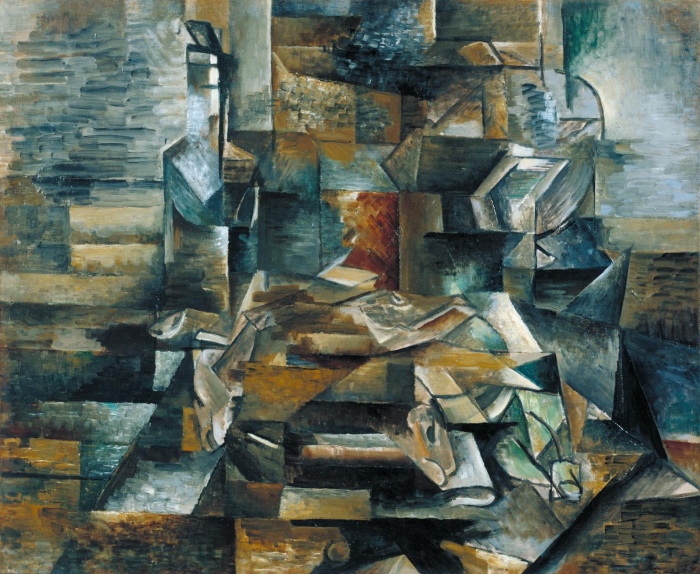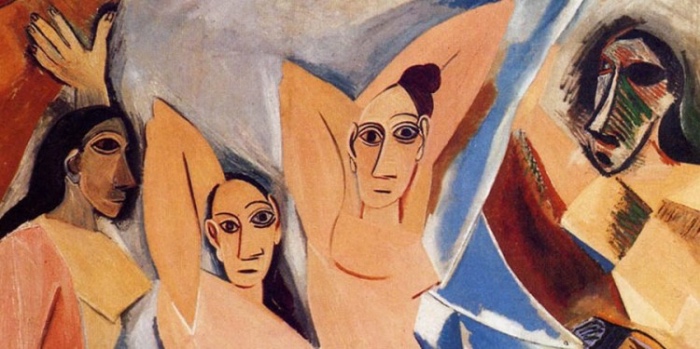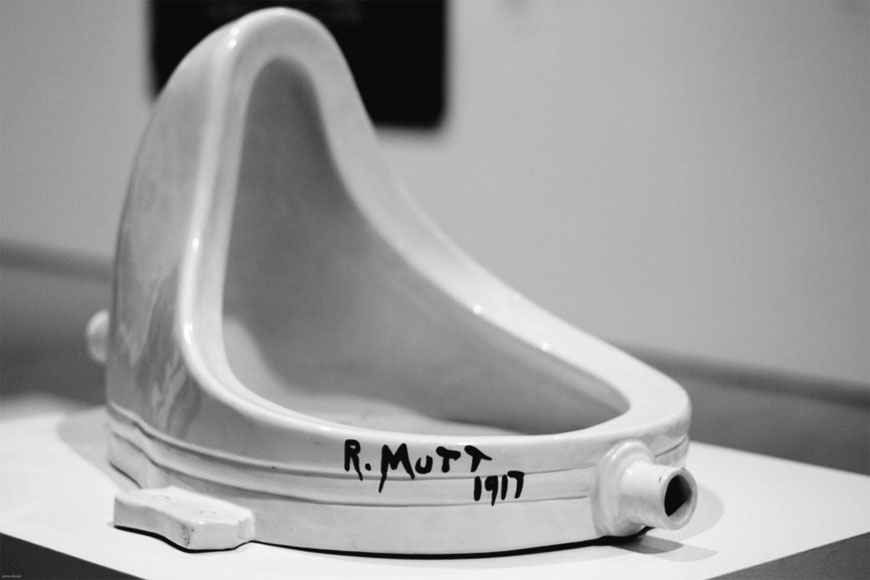
Bottle and Fishes c.1910-2 Georges Braque
If you are looking to understand more about Cubism, you are in the right place. In this post I will take you into the fascinating world in which art comes to life through the fragmentation of reality and the decomposition of forms.
Cubism was a revolutionary movement that fascinated and challenged artistic conventions throughout history. Prepare to abandon conventional perspectives and immerse yourself in a three-dimensional universe that invites the viewer to decompose and recompose the world. Together, we will explore the phases of Cubism, its influences and the works of its extraordinary protagonists, on a journey in search of the true essence of art.
Cubism and the fragmented reality of the 20th century

Les demoiselles d’Avignon, dettaglio
Cubism represents reality as we perceive it through our minds, capturing its three-dimensionality. Cubist painters observe the world from multiple angles, superimposing images to reconstruct the final subject.
In this new perspective, objects and space merge, creating compositions that challenge our perception.
The cubists’ goal is to convey the same perceptions as if observing the subject live, creating a multiple and simultaneous image that often defies recognition.
Cubism developed in three distinctive phases: Formative Cubism, Analytical Cubism and Synthetic Cubism. Each phase brings with it new challenges and advances in the decomposition and reconstruction of the image.
FORMATIVE CUBISM AND ITS ROOTS
In its first phase, Cubism was profoundly influenced by the painting of Paul Cézanne, author of the painting la montagne Sainte-Victoire, and by African sculpture. Cubist painters simplify forms and represent them through geometric volumes and cubes, dissolving distinctions between planes.
Favourite subjects are landscapes, still lifes and figures, and the predominant colours are warm.
A representative work from this phase is Pablo Picasso’s Les demoiselles d’Avignon, which highlights the influence of African art and Cézanne’s pioneering role in the Cubist movement.
THE EVOLUTION TOWARDS ANALYTICAL CUBISM
In 1910, Picasso and Braque abandoned classical perspective in favour of multiple points of view. Their works, initially characterised by ochre and grey colours, created confusion in the viewer who had to make an effort to mentally recompose the objects represented. However, with time, the painters acquired greater technical mastery and the understanding of their works increased.
The Cubists began to use the technique of ‘papiers collés’, collages of real materials on canvas, which allowed them to explore artistic freedom through the use of objects from the real world.
SYNTHETIC CUBISM
In 1912, the phase of Synthetic Cubism began, in which Picasso and Braque integrated letters and numbers into their works, offering recognisable elements that can be traced back to everyday reality.
With the help of Juan Gris, the Cubists developed new techniques that incorporated real objects into their paintings. In this phase, colour makes its return in Cubist works.
Fragmentation gives way to synthesis, resulting in objects that only exist on the canvas itself. However, the First World War put an end to the Cubists’ activity, leaving a legacy of extraordinary works.
THE GREAT CUBIST MASTERS
Besides Picasso and Braque, there are numerous artists who contributed to the Cubist movement. Robert Delaunay, Marcel Duchamp, Jacques Villon, and many others left a significant imprint on Cubist art. Their works represent the boldness and creativity that characterised the movement.

La Fontana di Marcel Duchamp.
Cubism marked an epoch in art, opening up new horizons and transcending the boundaries of artistic conventions. Thanks to the creative genius of Picasso, Braque and the other Cubist artists, we were transported into a three-dimensional world, in which reality was decomposed and recomposed before our eyes.
Even today, the legacy of Cubism lives on and continues to inspire contemporary artists, testifying to the enduring power of this revolutionary movement.


Great article! Recently I was doing a term paper on this topic and came across essaypapers.reviews where I found a lot of useful information. I think it would not be superfluous to look if you are interested in the same way as I am.
Thanks 🙂